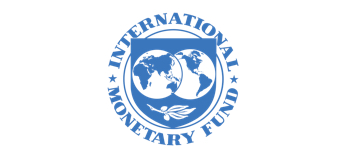| Organisation Name | International Monetary Fund (IMF) |
| Founded | 27 December 1945 |
| Type | International financial institution |
| Purpose | Promote international monetary co-operation, facilitate international trade, foster sustainable economic growth, make resources available to members experiencing balance of payments difficulties, prevent and assist with recovery from international financial crises |
| Headquarters | Washington, D.C., U.S. |
| Areas Served | Worldwide |
| Membership | 190 countries (189 UN countries and Kosovo) |
| Managing Director | Kristalina Georgieva |
| First Deputy Managing Director | Gita Gopinath |
| Budget (2022) | $1.2 billion USD |
| Website | www.imf.org |

According to the IMF itself, it works to foster global growth and economic stability by providing policy advice and financing the members by working with developing countries to help them achieve macroeconomic stability and reduce poverty. The rationale for this is that private international capital markets function imperfectly and many countries have limited access to financial markets. Such market imperfections, together with balance-of-payments financing, provide the justification for official financing, without which many countries could only correct large external payment imbalances through measures with adverse economic consequences. The IMF provides alternate sources of financing such as the Poverty Reduction and Growth Facility.
Upon the founding of the IMF, its three primary functions were: to oversee the fixed exchange rate arrangements between countries, thus helping national governments manage their exchange rates and allowing these governments to prioritize economic growth,and to provide short-term capital to aid the balance of payments.This assistance was meant to prevent the spread of international economic crises. The IMF was also intended to help mend the pieces of the international economy after the Great Depression and World War II as well as to provide capital investments for economic growth and projects such as infrastructure.
The IMF’s role was fundamentally altered by the floating exchange rates post-1971. It shifted to examining the economic policies of countries with IMF loan agreements to determine if a shortage of capital was due to economic fluctuations or economic policy. The IMF also researched what types of government policy would ensure economic recovery.A particular concern of the IMF was to prevent financial crises such as those in Mexico in 1982, Brazil in 1987, East Asia in 1997–98, and Russia in 1998, from spreading and threatening the entire global financial and currency system.
The challenge was to promote and implement a policy that reduced the frequency of crises among the emerging market countries, especially the middle-income countries which are vulnerable to massive capital outflows.Rather than maintaining a position of oversight of only exchange rates, their function became one of surveillance of the overall macroeconomic performance of member countries. Their role became a lot more active because the IMF now manages economic policy rather than just exchange rates.
In addition, the IMF negotiates conditions on lending and loans under their policy of conditionality,which was established in the 1950s.Low-income countries can borrow on concessional terms, which means there is a period of time with no interest rates, through the Extended Credit Facility (ECF), the Standby Credit Facility (SCF) and the Rapid Credit Facility (RCF). Non-concessional loans, which include interest rates, are provided mainly through the Stand-By Arrangements (SBA), the Flexible Credit Line (FCL), the Precautionary and Liquidity Line (PLL), and the Extended Fund Facility. The IMF provides emergency assistance via the Rapid Financing Instrument (RFI) to members facing urgent balance-of-payments needs.
